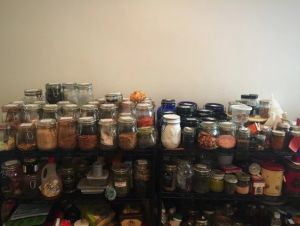Dehydration nations

"Dehydration Nations is a grassroots, indigenous-led project that seeks to share the traditional skill of food dehydration, making connections between communities and working toward facilitating a network of trade in dehydrated foods between all nations."[1]
Summary
While there are several reasons to dry food, the main reason is to preserve it. Covering virtually all surfaces of the world are microorganisms; bacteria and fungi. Some (but certainly not all) of these microorganisms cause our food to spoil and can be dangerous to our health. Most are harmless, while some microorganisms are actually beneficial and will make our food ferment, but that is another story. All microorganisms need two main things to grow: nutrients and water. If we take away either of these things, the microbes will not grow and multiply, and therefore our food will be safe from spoilage. Taking the water out of our food is one of the simplest, and low-energy ways to keep it safe from spoilage- and it is one that, hopefully with this simple guide and a little effort, you can get started today, and join us in the goal of having A Dehydration Station in Every Nation![2]
Accessibility
"Food dehydration doesn’t need to be fancy, high-tech or expensive. Audrey got started by getting creative with thrifted items, and today uses a combination of methods to get her dehydrating done. “Initially i thought, ok how much is this going to cost me, because I looked at the rack I had in my window and the fan i already owned, and the racks cost me fifty
cents each. So I started hitting up the second hand stores.”
Second hand stores can supply you with almost everything you need to get started dehydrating (more about that in the next section). And if you do decide to get an electric food dehydrator, running it is a low-energy option. When we use canning or freezing to preserve our food, it takes a lot of special supplies or constant electricity. Dehydration, as the squirrel taught us, is a natural process. So at-home dehydration is simple: the only two basic elements you need for this are heat and air!
“Even a commercial dehydrator only takes $1 per 24 hour use. For a buck I got my bouillon (concentrated meat broth) that will last me far longer than a dollar of pre-made bouillon powder from the store. No waste. So garlic powder, I have the same jar that i keep my garlic powder in for more than 10 years-- i don’t have all these little bottles to toss in the recycling bin.”
So keep that in mind, and remember: dehydration is a naturally occurring process-- we are just here to help it help us."[3]
Dehydration Methods
Window Screens
Cascadian Nations
Hazelnut was especially valued for its oil (it is sold today for culinary and medicinal purposes). Hazelnut oil is high in oleic acid, a mono-unsaturated fat thought to help lower cholesterol and reduce blood pressure. Marion remembers her grandmother using it for cooking and it was mixed with bear grease for storing dried berries and other plant foods. Rendering the nuts and shells to oil is an additional and effective means of preserving and storing foods. Marion recalls:
"My grandmother, she’d take them, she’d put them in the pan, she’d put them on the stove again, so they were dry... then the next morning she got a cotton cloth… plastic was a hard thing to find in those days. But there was that saran wrap that something came in that saran wrap and she always saved that saran wrap. I wondered why she saved it. She put the nuts in there, put the cotton cloth over it, got my little hammer little mallet, and then I had to sit there and smash these... smash these things in a pan making sure that none of the oil is going to disappear. And then she’d take that oil and she would put it into that cotton cloth, she’d gather it up and then she’d hang it up and then she’d squeeze it. And all the oil would drip into this little container. Well, you don’t get very much oil out of all the nuts, but we got a lot out of it... and then she’d take that oil and she would take a teaspoon and put it in this little pot and put another spoonful in [another pot] this and another one here... she had different things she used the oil for, as medicine and food."[4]
Sources
- ↑ http://www.nmfccc.ca/uploads/4/4/1/7/44170639/dehydration_nations_zine.pdf
- ↑ http://www.nmfccc.ca/uploads/4/4/1/7/44170639/dehydration_nations_zine.pdf
- ↑ http://www.nmfccc.ca/uploads/4/4/1/7/44170639/dehydration_nations_zine.pdf
- ↑ Armstrong, C. G., Dixon, W. M., & Turner, N. J. (2018). Management and Traditional Production of Beaked Hazelnut (k’áp’xw-az’, Corylus cornuta; Betulaceae) in British Columbia. Human Ecology. doi:10.1007/s10745-018-0015-x